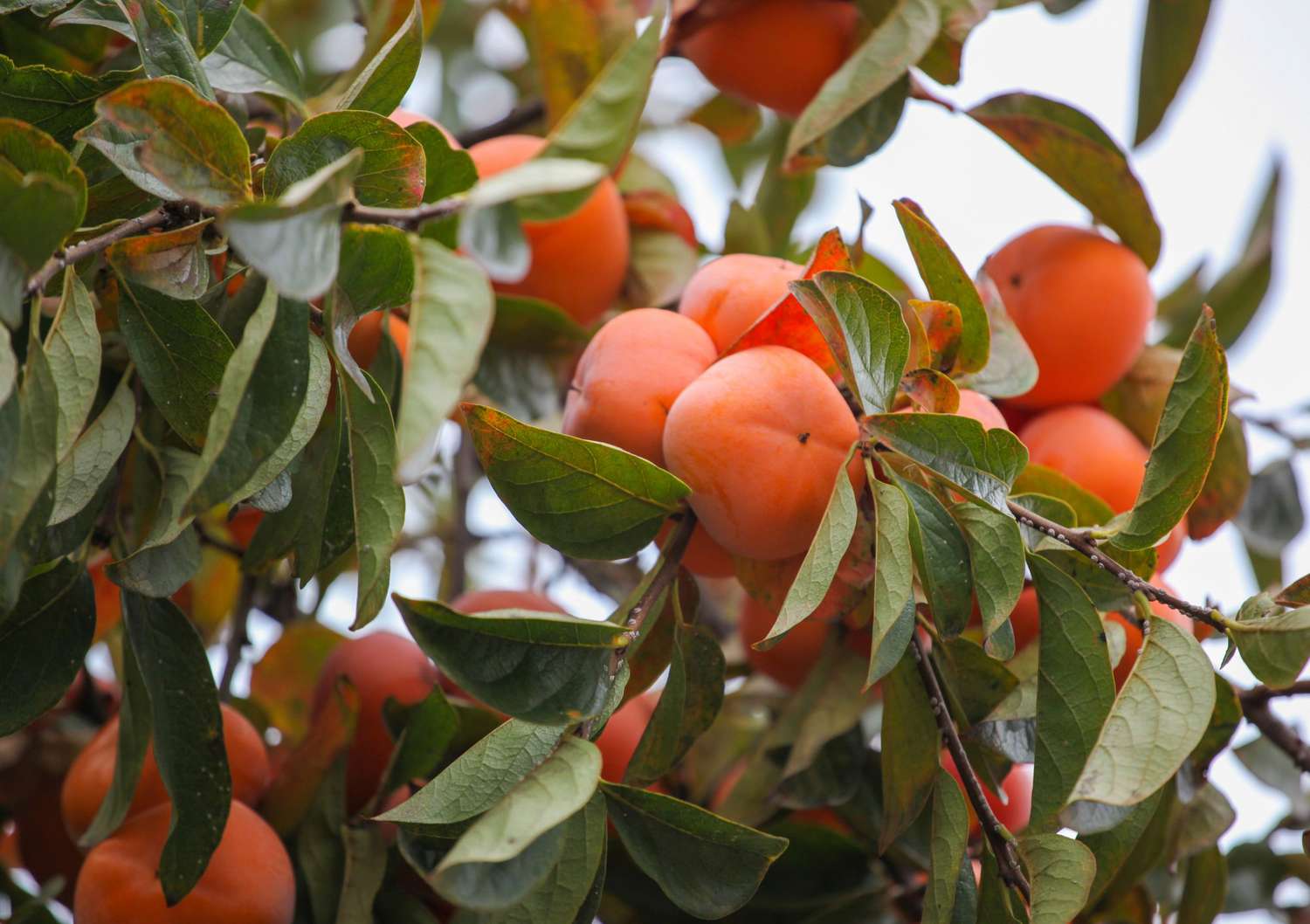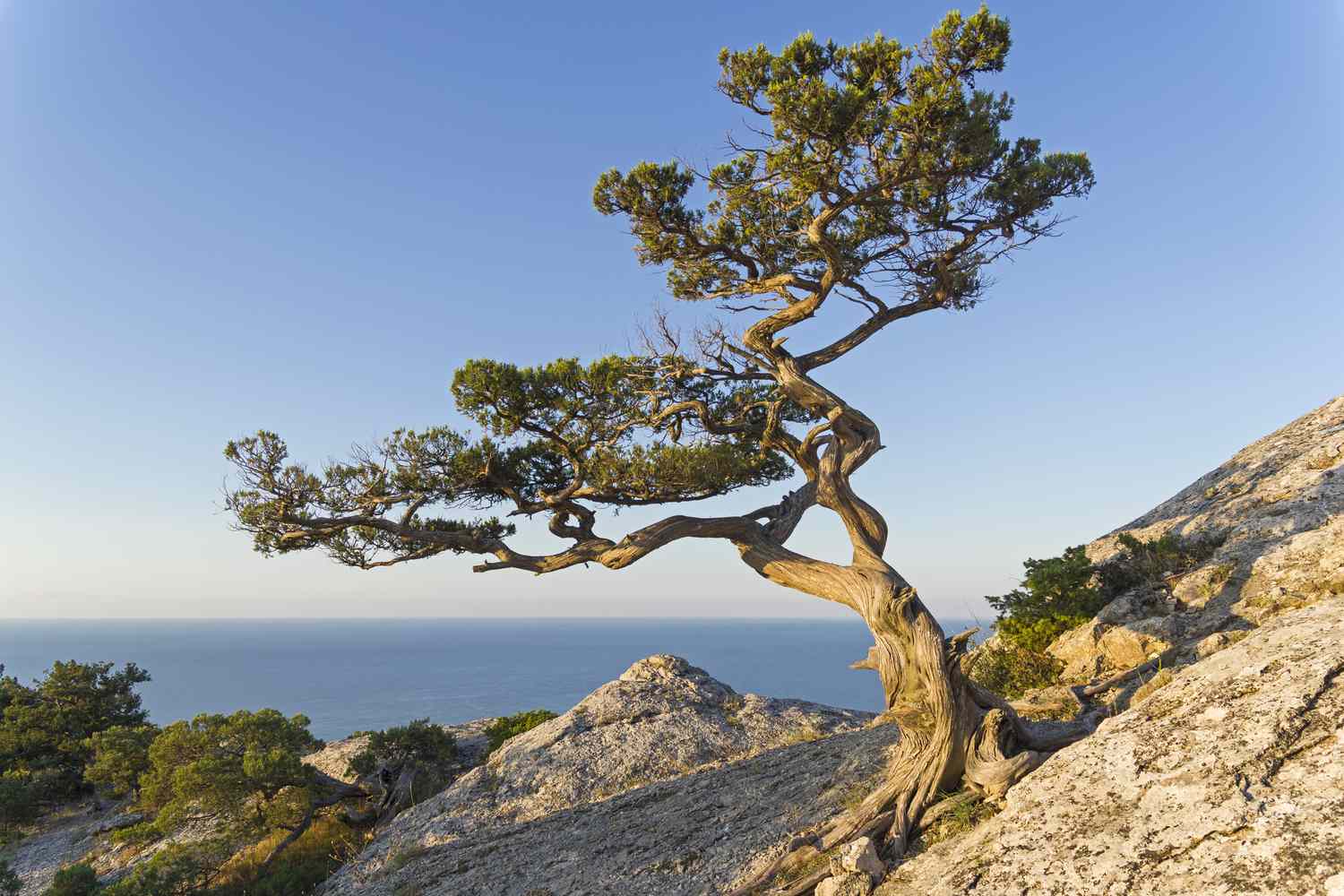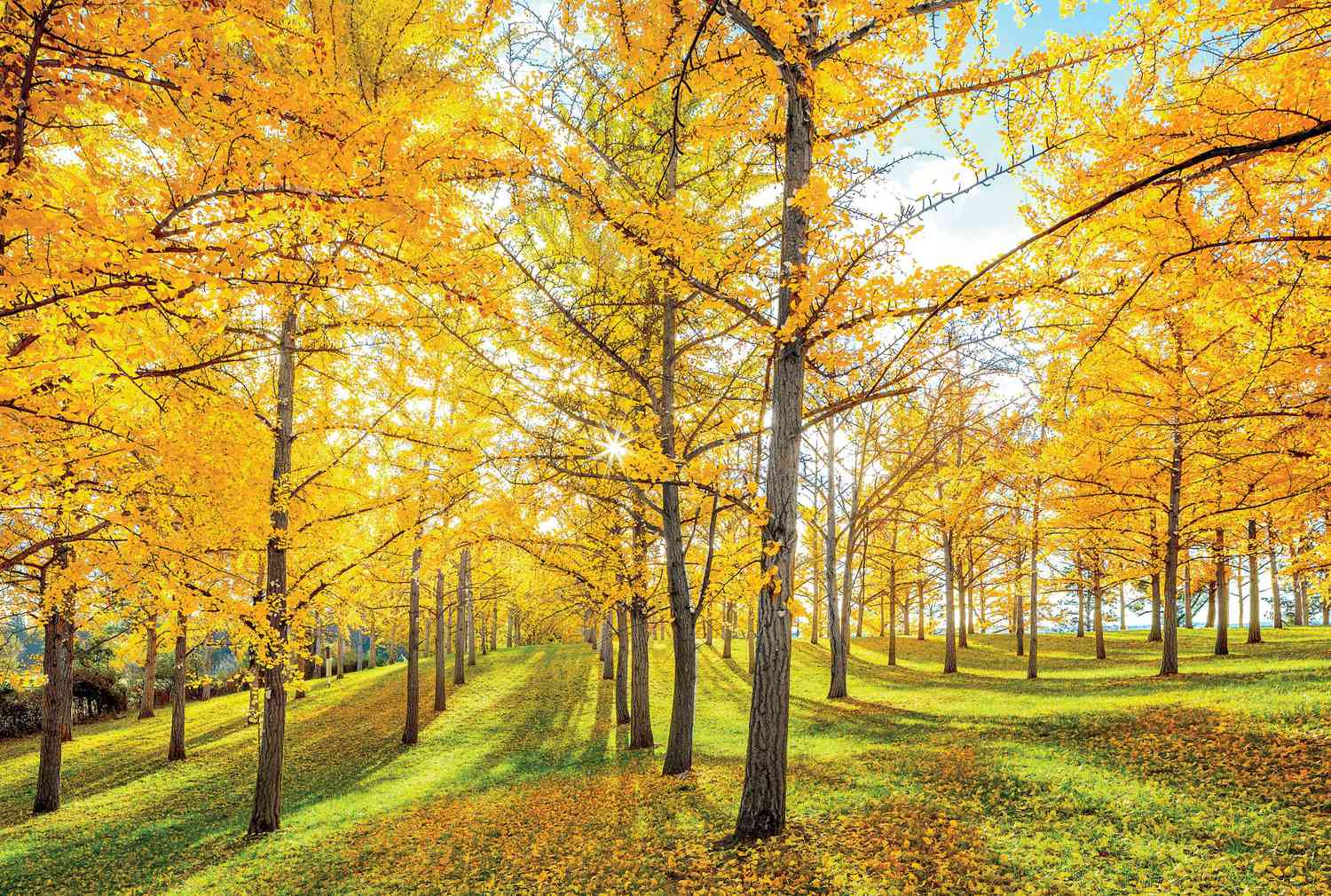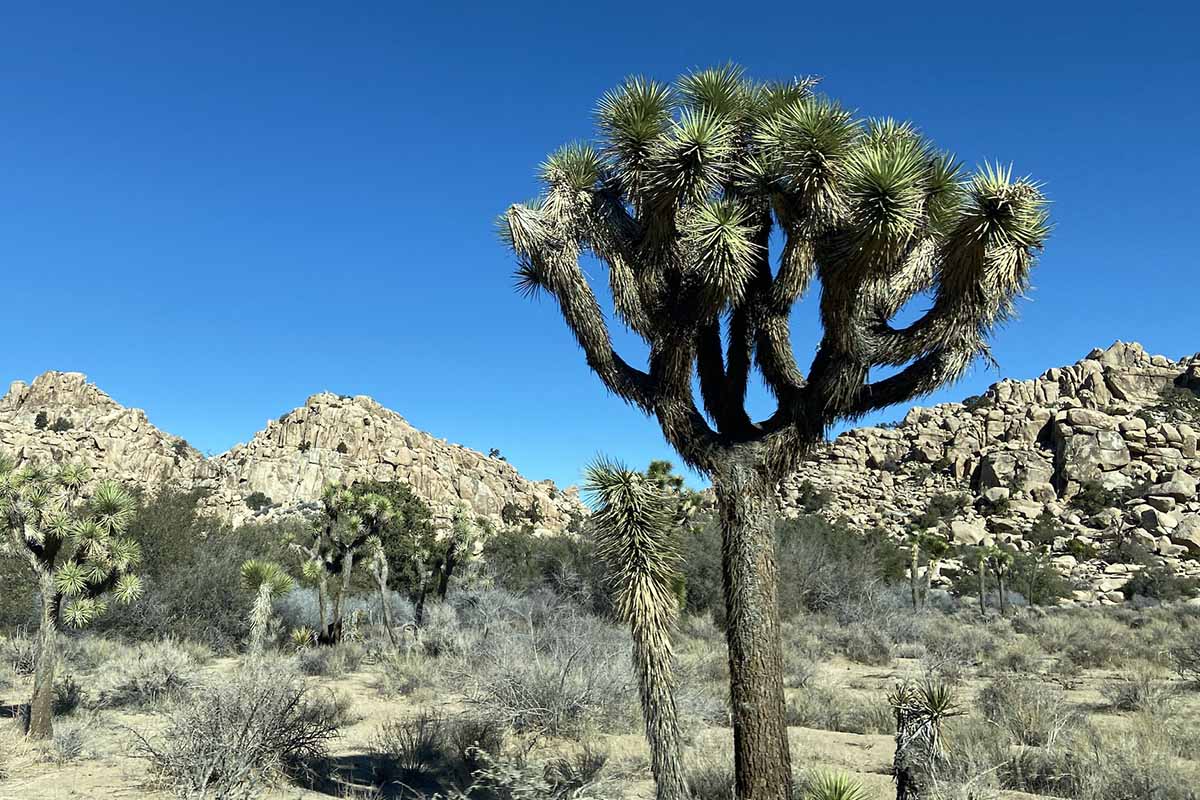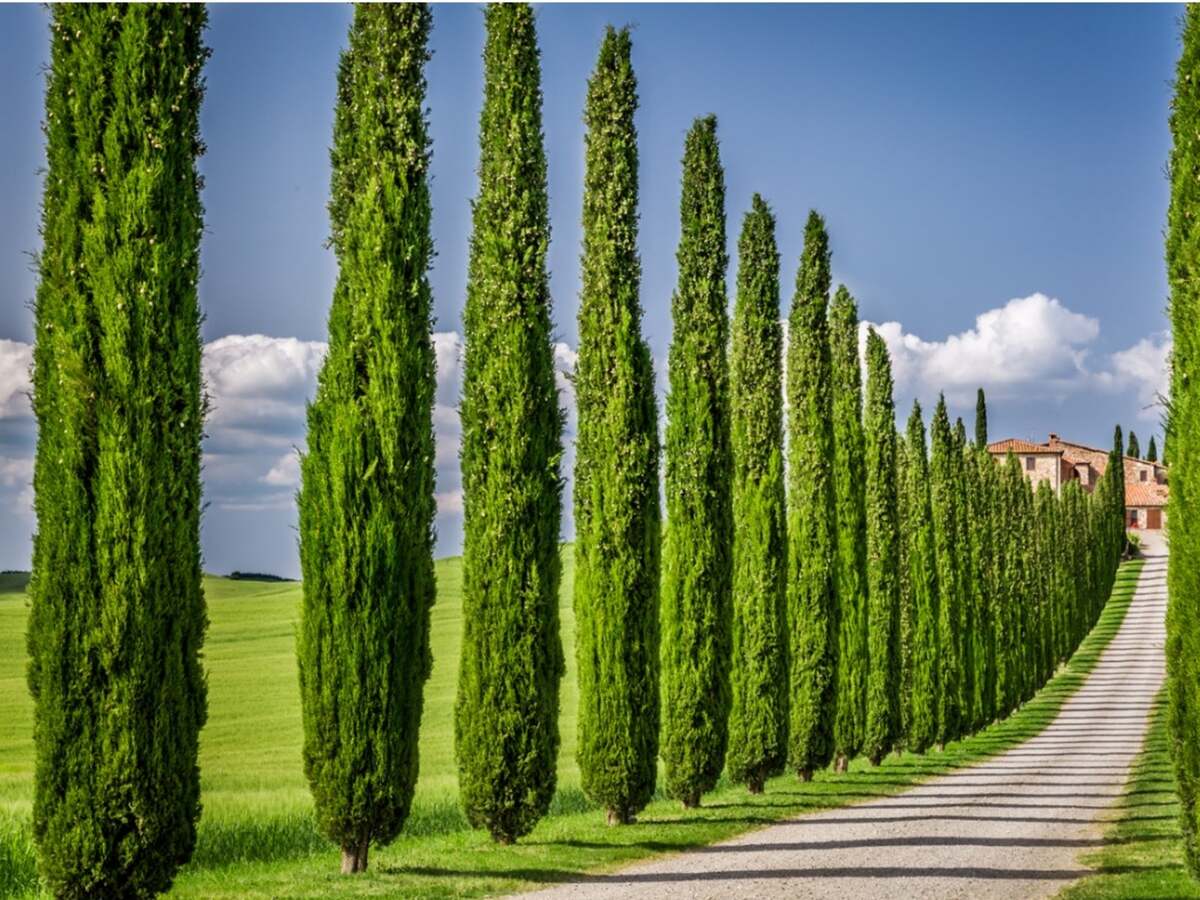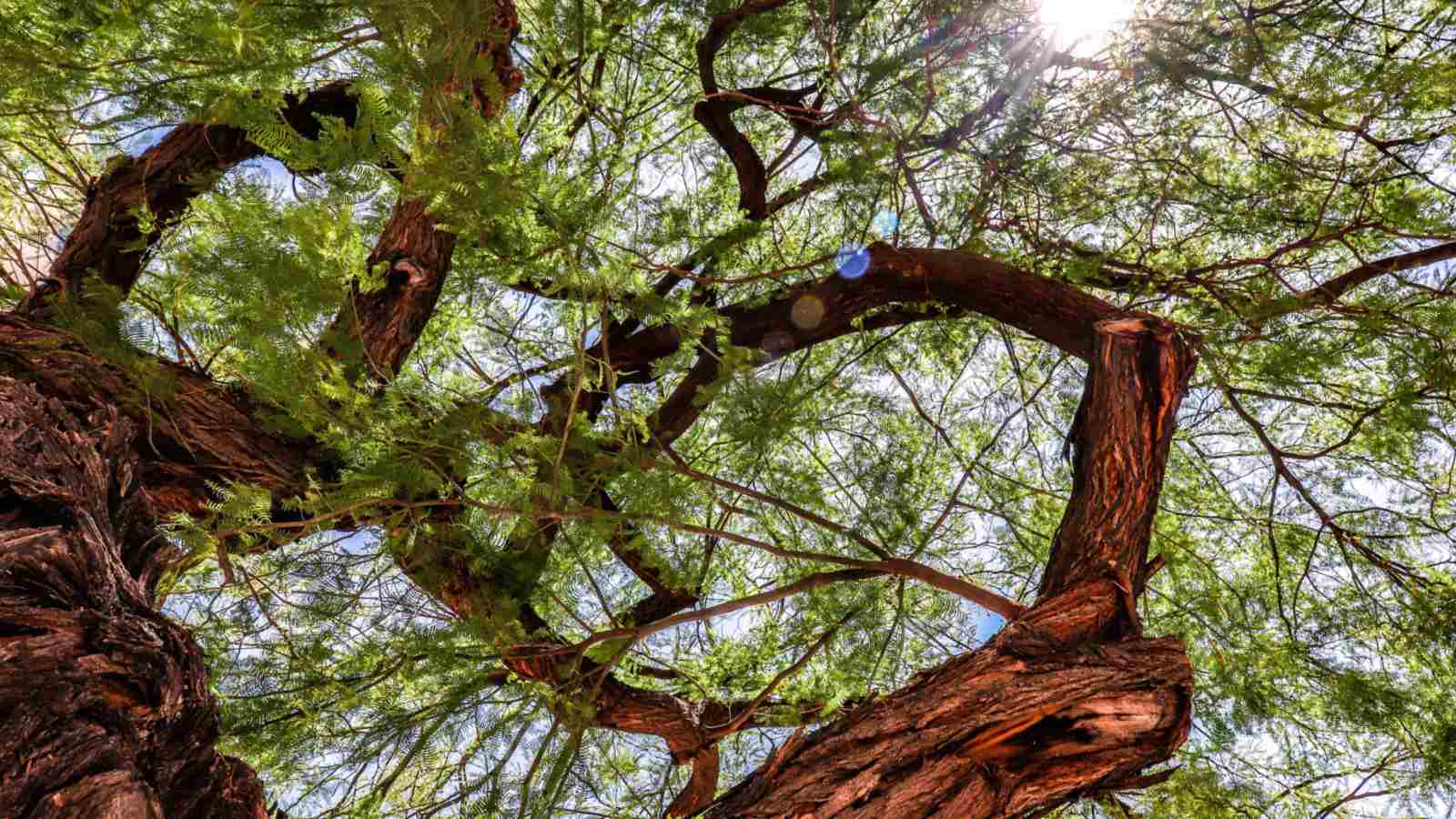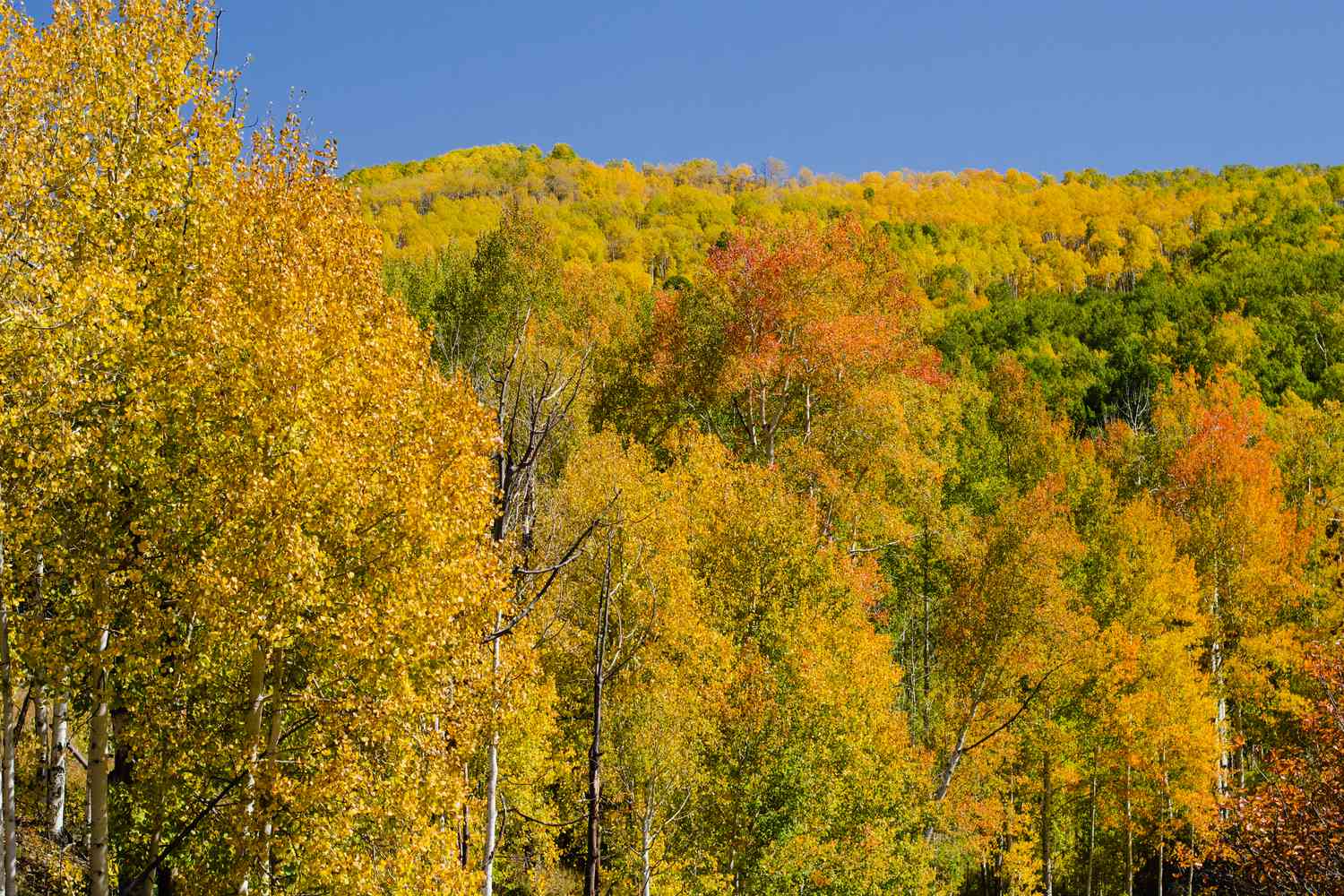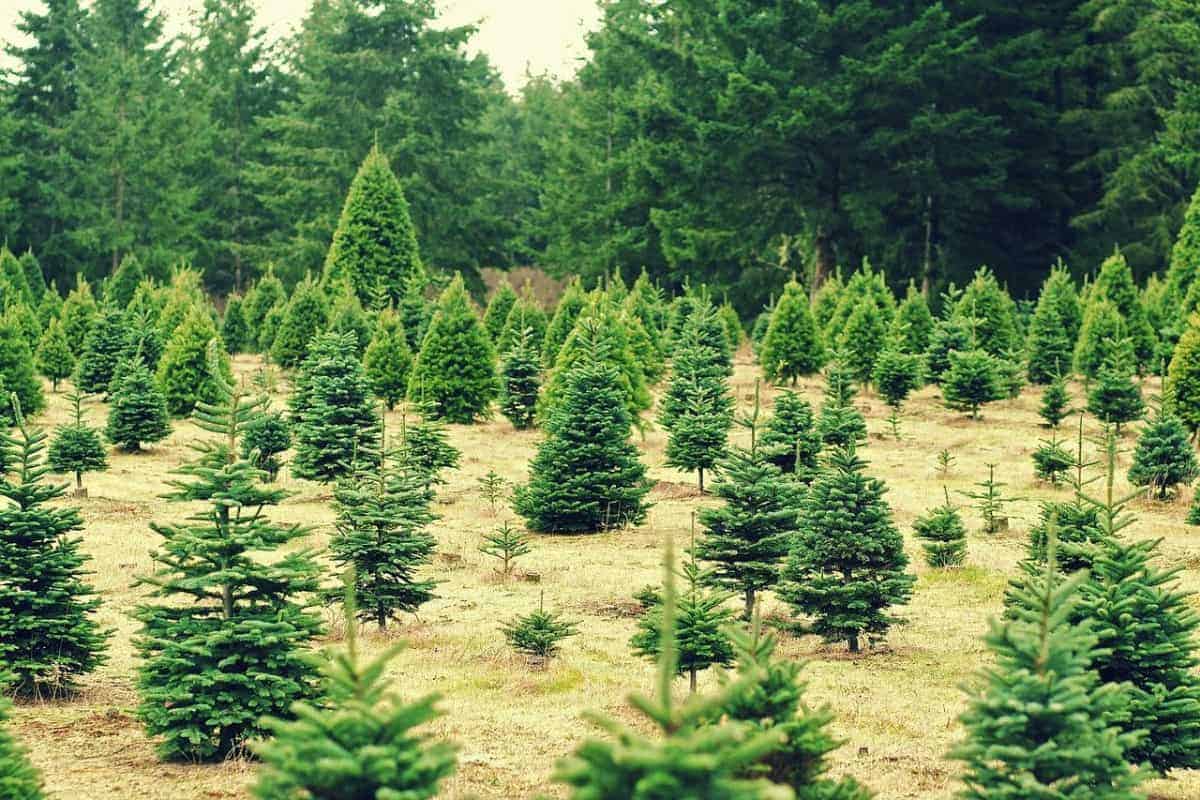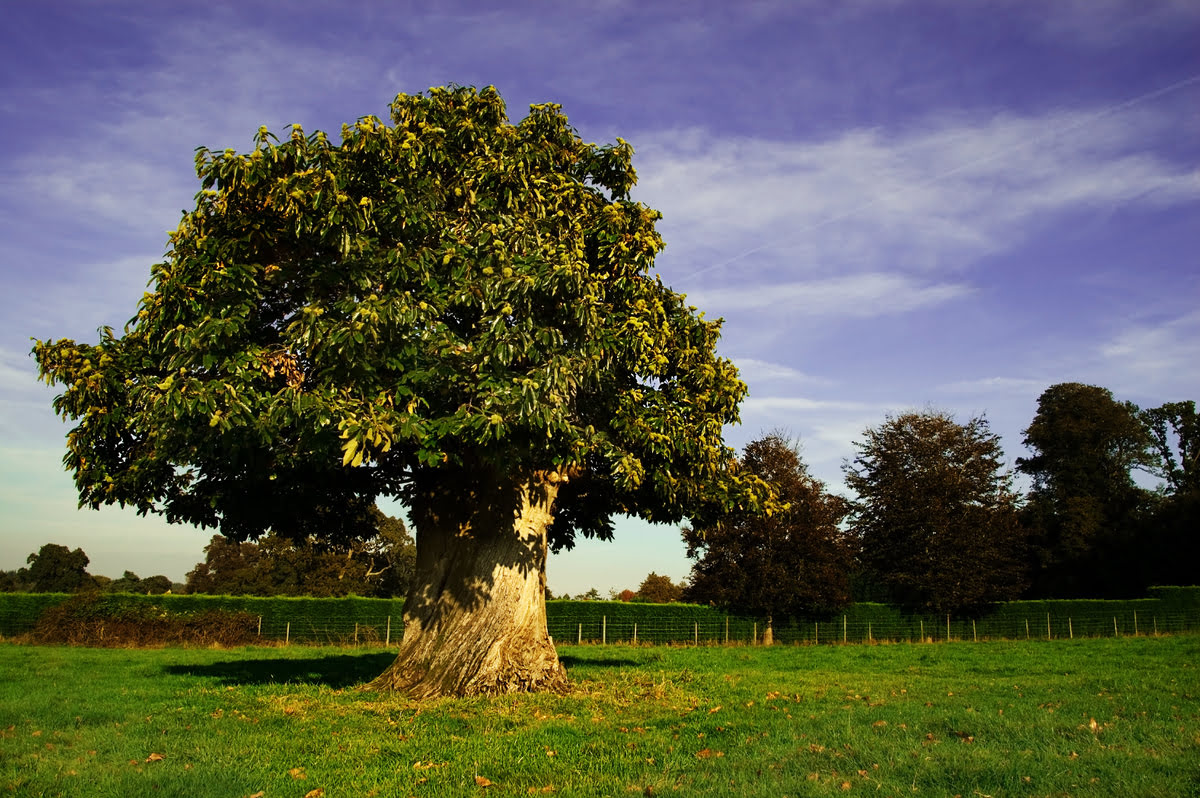Home>Gardening Techniques>Plant Care>Where Do Mahogany Trees Grow


Plant Care
Where Do Mahogany Trees Grow
Published: November 10, 2023
Discover the ideal planting and care tips for mahogany trees. Find out where these stunning trees thrive and how to ensure their growth and health.
(Many of the links in this article redirect to a specific reviewed product. Your purchase of these products through affiliate links helps to generate commission for Chicagolandgardening.com, at no extra cost. Learn more)
Table of Contents
Introduction
Mahogany trees are revered for their beauty, durability, and versatility. These majestic trees are found in various parts of the world, and their natural habitat plays a crucial role in their growth and development. Whether in tropical rainforests or sub-tropical regions, mahogany trees thrive in specific climatic conditions that support their unique needs.
But where exactly do mahogany trees grow? This article will explore the natural habitats of mahogany trees, including their presence in South America, Central America, Africa, and Asia. Additionally, we’ll delve into the significance of commercial plantations in sustaining the growth and availability of these trees.
Mahogany trees belong to the Meliaceae family and are known for their large size, straight trunks, and reddish-brown timber. Their timber is highly valued for its use in furniture, cabinetry, flooring, and boat building. The demand for mahogany wood has led to extensive logging, making it necessary to establish sustainable practices to preserve these magnificent trees.
Now, let’s dive into the various regions where mahogany trees can be found!
Natural Habitat of Mahogany Trees
Mahogany trees thrive in diverse ecosystems across the globe, with specific climate and soil conditions facilitating their growth. Understanding the natural habitat of mahogany trees is crucial for their conservation and for cultivating them in commercial plantations.
The primary natural habitat of mahogany trees is within tropical rainforests. These dense and biodiverse forests provide the ideal environment for these trees to flourish. The abundant rainfall, high humidity, and warm temperatures of tropical rainforests promote rapid growth and provide the necessary moisture and nutrients for mahogany trees.
In addition to tropical rainforests, mahogany trees can also be found in subtropical regions. These areas experience milder winters and are characterized by a mix of deciduous and evergreen forests. While they may not encounter the same level of rainfall as their tropical counterparts, subtropical regions still offer suitable conditions for mahogany trees to grow.
One of the primary regions where mahogany trees are naturally found is South America. Countries such as Brazil, Peru, and Bolivia are known for their vast expanses of tropical rainforests that provide an ideal habitat for these trees. The Amazon rainforest, in particular, is home to numerous species of mahogany, including Swietenia macrophylla and Swietenia mahagoni.
Central America is another significant region where mahogany trees thrive. Countries like Mexico, Honduras, and Belize are known for their extensive mahogany forests. The rich biodiversity and favorable climatic conditions in these areas support the growth of mahogany trees and contribute to their sustainable harvest.
Continents like Africa and Asia are also home to mahogany trees. The African mahogany (Khaya spp.) is prevalent in countries like Ghana, Nigeria, and Cameroon, where it grows in tropical forests. In Asia, mahogany trees can be found in countries such as the Philippines and Indonesia, where they are cultivated in commercial plantations for timber production.
Understanding the natural habitat of mahogany trees is vital for creating sustainable management strategies and ensuring their long-term survival. By preserving their natural environments and cultivating them responsibly in suitable regions, we can continue to enjoy the beauty and benefits of these remarkable trees.
Tropical Rainforests
Tropical rainforests are one of the primary habitats for mahogany trees. These dense and lush forest ecosystems, with their unique environmental characteristics, provide the perfect conditions for mahogany trees to thrive.
First and foremost, tropical rainforests receive a significant amount of rainfall throughout the year. This abundant rainfall ensures that the soil remains moist, providing a constant supply of water for the mahogany trees. The combination of rainfall and high humidity creates a moist microclimate that supports the growth and development of these trees.
Furthermore, the warm temperatures found in tropical rainforests are suitable for mahogany tree growth. These trees require consistent warmth to flourish, and the tropical climate provides an ideal environment for them. The consistent temperatures ensure that the trees can undergo photosynthesis efficiently and maintain their metabolic processes.
Another crucial aspect of tropical rainforests is the rich and fertile soil. The continuous decomposition of organic matter, such as fallen leaves and decaying trees, leads to the formation of nutrient-dense soil. Mahogany trees benefit from this nutrient-rich soil, which provides them with the necessary minerals and nutrients for healthy growth.
Tropical rainforests are known for their incredible biodiversity, and mahogany trees are an integral part of this intricate web of life. These trees provide not only valuable timber but also habitat and nourishment for countless other plant and animal species. The large canopy of mahogany trees provides shade and shelter, creating a diverse and thriving ecosystem beneath them.
Unfortunately, tropical rainforests, including the habitats of mahogany trees, are under threat due to deforestation and habitat destruction. The demand for timber and land for agriculture has led to extensive logging in these regions. Sustainable management practices and conservation efforts are crucial to protect these sensitive ecosystems and ensure the future of mahogany trees.
By understanding and appreciating the importance of tropical rainforests as the natural habitat for mahogany trees, we can prioritize their conservation and work towards sustainable practices that both protect the environment and meet our needs for mahogany timber.
Subtropical Regions
While mahogany trees are predominantly found in tropical rainforests, they also have the ability to thrive in subtropical regions. These regions have slightly different climatic conditions compared to tropical rainforests but still offer suitable habitats for mahogany trees.
Subtropical regions are characterized by milder winters and moderate temperatures throughout the year. Unlike the consistently warm temperatures found in tropical rainforests, these regions experience seasonal variations. However, the temperatures still remain within a range that allows mahogany trees to grow and flourish.
In these subtropical regions, mahogany trees can be found in a variety of forest types, including deciduous and evergreen forests. Deciduous forests, which lose their leaves during the winter, provide mahogany trees with an opportunity to conserve energy and resources during this period. Once the spring arrives, the trees regrow their leaves and resume their growth.
Subtropical regions may not receive the same amount of rainfall as tropical rainforests, but they still have adequate precipitation to support mahogany tree growth. This consistent water supply, combined with the moderate temperatures, allows the trees to maintain their metabolic processes and thrive.
Countries in subtropical regions where mahogany trees can be found include parts of the southern United States, such as Florida and Texas, as well as regions in southern China and Taiwan. These areas provide a suitable climate for the cultivation and growth of mahogany trees, allowing for sustainable timber production.
In subtropical regions, mahogany trees often coexist with other tree species of similar adaptability. The diverse forest ecosystems found in these regions provide a mix of tree species and support unique biodiversity. This creates a dynamic environment where mahogany trees contribute to the overall ecological balance.
It’s important to note that while subtropical regions can offer suitable conditions for mahogany tree growth, they may not be as ideal as tropical rainforests. The growth rate and quality of timber produced in subtropical regions may differ from those in their natural habitat. Nevertheless, these regions play a vital role in expanding the distribution and availability of mahogany trees.
By recognizing subtropical regions as viable habitats for mahogany trees, we can explore sustainable cultivation and conservation strategies to ensure the long-term growth and preservation of these valuable trees.
Distribution in South America
South America is renowned for its vast tropical rainforests, which serve as the natural habitat for various species of mahogany trees. The continent boasts a rich distribution of mahogany trees, with countries like Brazil, Peru, and Bolivia playing a significant role in their presence and conservation.
Brazil, home to the iconic Amazon rainforest, is a key region for mahogany tree distribution. The Swietenia macrophylla and Swietenia mahagoni species are prevalent in the Brazilian Amazon, showcasing their remarkable adaptability to the region’s environmental conditions. These tall, majestic trees with their reddish-brown timber contribute to both the ecological diversity and the economy of the country.
Peru, with its vast tracts of tropical rainforests, is another important location for mahogany tree distribution in South America. The Swietenia macrophylla species, known as “big-leaf mahogany,” thrives in the Peruvian Amazon. The country has implemented various conservation measures and regulations to protect these valuable trees and promote sustainable timber harvesting practices.
Bolivia also boasts a significant presence of mahogany trees, particularly in the forests of the Amazon Basin. Mahogany species like Swietenia macrophylla and Swietenia candollei can be found in various parts of the country. Bolivia has taken steps to regulate mahogany logging and ensure sustainable management to protect the forests and their valuable resources.
In addition to these countries, mahogany trees can also be found in other parts of South America, including Venezuela, Colombia, and Ecuador. These countries contribute to the overall distribution and conservation efforts of mahogany trees in the region.
The distribution of mahogany trees in South America is of profound significance, not only for the ecological balance but also for the local economies. The timber derived from mahogany trees contributes to the export industry, providing economic opportunities for communities in the region. However, it is necessary to strike a balance between economic interests and sustainable practices to ensure the long-term viability of these majestic trees and their habitats.
Efforts are being made to conserve and protect the mahogany tree populations in South America. Conservation organizations, governments, and local communities are working together to implement sustainable management practices, raise awareness about the importance of biodiversity, and protect the valuable ecosystems that mahogany trees rely on.
By understanding the distribution of mahogany trees in South America and supporting sustainable practices, we can contribute to the preservation of these remarkable trees and the preservation of the incredible biodiversity that relies on them.
Presence in Central America
Central America is home to significant populations of mahogany trees, making it a crucial region for their presence and conservation. Countries such as Mexico, Honduras, and Belize play a prominent role in sustaining the growth and distribution of these magnificent trees.
Mexico, with its diverse landscapes and rich biodiversity, hosts thriving mahogany tree populations. The southern states of Campeche, Quintana Roo, and Chiapas are known for their extensive mahogany forests. The Swietenia macrophylla species, commonly known as “big-leaf mahogany,” is prevalent in these areas. Mexico has implemented measures to regulate mahogany logging and promote sustainable practices in order to protect these valuable trees.
Honduras, located in the heart of Central America, is another significant country with a strong presence of mahogany trees. The Honduran mahogany (Swietenia macrophylla) is highly sought after for its valuable timber. The country has made efforts to sustainably manage its mahogany forests and promote responsible harvesting practices to ensure the long-term viability of the resource.
Belize, with its vast tracts of tropical rainforests and protected areas, is renowned for its mahogany trees. Mahogany logging in Belize dates back centuries, and the country has implemented regulations and conservation efforts to preserve its mahogany resources. The mahogany species found in Belize includes Swietenia macrophylla, Swietenia humilis, and Swietenia mahagoni.
Other countries in Central America, such as Costa Rica, Guatemala, and Nicaragua, also have significant mahogany tree populations. These countries recognize the importance of mahogany trees for their ecosystems and economies, and efforts are being made to protect and sustainably manage these valuable resources.
The presence of mahogany trees in Central America is of utmost importance for the region’s biodiversity and cultural heritage. These majestic trees provide essential habitat for a wide range of species and contribute to the cultural and economic well-being of local communities.
However, the mahogany tree populations in Central America, like many other regions, face threats from deforestation and unsustainable logging practices. Conservation organizations, governments, and local communities are working together to develop sustainable management strategies, raise awareness about the value of mahogany trees, and promote responsible practices that ensure the long-term viability of these remarkable trees.
By recognizing and supporting the presence of mahogany trees in Central America, we can contribute to the conservation of these valuable resources and uphold the biodiversity and cultural significance that they represent.
Mahogany Trees in Africa
Africa is home to several species of mahogany trees, contributing to the continent’s rich biodiversity and providing valuable resources for local communities. Countries such as Ghana, Nigeria, and Cameroon are known for their significant mahogany tree populations and the conservation efforts implemented to protect these remarkable trees.
The African mahogany (Khaya spp.) is one of the prominent species found in the region. This genus includes species like Khaya ivorensis, Khaya anthotheca, and Khaya senegalensis. These trees are known for their durable timber and are highly valued for various applications, including furniture, flooring, and boat building.
In Ghana, mahogany trees are primarily found in the tropical forests of the Ashanti Region, the Brong-Ahafo Region, and the Western Region. The timber derived from Ghanaian mahogany is highly sought after for its quality and durability. Efforts have been made to sustainably manage mahogany logging in Ghana to ensure the long-term availability and conservation of these valuable resources.
Nigeria is another African country with a significant presence of mahogany trees. The Nigerian mahogany (Khaya ivorensis) is widely distributed throughout the country. Although mahogany logging has had an impact on the population of these trees, conservation initiatives are being implemented to protect and sustainably manage the resource.
In Cameroon, mahogany trees can be found in the tropical forests of the southern and western regions. The African mahogany species Khaya anthotheca is prevalent in this country. Cameroon has established protected areas and sustainable management practices to preserve its mahogany tree populations, ensuring the ecological balance and the economic benefits derived from these trees.
Other African countries, such as Ivory Coast, Liberia, and Congo, also have significant mahogany tree populations. These countries recognize the importance of conserving and sustainably managing their mahogany resources to protect their biodiversity and support their local economies.
Mahogany trees in Africa face similar challenges to those in other parts of the world, including deforestation and unsustainable logging practices. However, conservation efforts, including the establishment of protected areas and sustainable management practices, are being implemented to ensure the long-term survival of these valuable trees and their habitats.
By recognizing the presence of mahogany trees in Africa and supporting sustainable practices, we can contribute to the conservation of these remarkable resources, promote responsible forestry practices, and uphold the ecological integrity and cultural significance they represent.
Habitat in Asia
Asia is home to various species of mahogany trees, with countries like the Philippines and Indonesia playing significant roles in their distribution and conservation. The mahogany trees found in Asia have adapted to the region’s unique environmental conditions and contribute to both the ecological diversity and the economy of the continent.
In the Philippines, mahogany trees are widely cultivated in commercial plantations for timber production. The Philippine mahogany (Swietenia macrophylla) is highly valued for its quality wood, which is used in the construction and furniture industries. The country’s tropical climate and fertile soils provide suitable conditions for the growth of mahogany trees.
Indonesia is another key country in Asia with a significant mahogany tree habitat. The Indonesian mahogany (Swietenia mahagoni) is found in various parts of the country, particularly in the regions of Java, Sumatra, and Kalimantan. Indonesia has implemented sustainable forestry practices to preserve its mahogany resources and ensure their long-term availability.
Other countries in Asia, such as Malaysia, Thailand, and Myanmar, also have mahogany tree populations. These countries recognize the importance of protecting their mahogany resources and implementing sustainable management practices to maintain the ecological balance.
The Asian habitat for mahogany trees varies, including both natural forests and commercial plantations. These trees require a warm and humid climate along with rich and well-drained soils for optimal growth. The combination of tropical climates and suitable soil conditions in many Asian regions provides favorable environments for the cultivation of mahogany trees.
Commercial plantations in Asia play a significant role in meeting the demand for mahogany timber. These plantations not only contribute to the economy but also help alleviate the pressure on natural forests by providing a sustainable source of mahogany wood. Proper management practices, including regular pruning and sustainable harvesting, are implemented in these plantations to ensure the long-term viability of mahogany trees.
Conservation efforts in Asia are crucial to maintain the ecological integrity of mahogany habitats. This includes the establishment of protected areas and the implementation of sustainable forestry practices. By preserving the habitats of mahogany trees in Asia, we can maintain the biodiversity and sustainable use of these valuable resources.
By recognizing the importance of the habitat in Asia and supporting sustainable practices, we can contribute to the preservation of mahogany trees, the protection of ecosystems, and the continued availability of mahogany wood for various industries.
Commercial Plantations
Commercial plantations play a crucial role in meeting the demand for mahogany timber while also supporting the conservation of natural forests. These plantations are specifically established to cultivate mahogany trees in a controlled and sustainable manner, ensuring a continuous supply of quality wood for various industries.
Commercial plantations provide several benefits for mahogany tree cultivation. First and foremost, these plantations help alleviate the pressure on natural forests, as the demand for mahogany wood continues to rise. By cultivating mahogany trees in dedicated plantations, the need for harvesting from wild populations is reduced, allowing natural forests to thrive and maintain their ecological balance.
The establishment of commercial plantations also allows for greater control over the growth and management of mahogany trees. Plantation owners can implement sustainable forestry practices, including regular pruning, selective harvesting, and proper thinning, to ensure optimal tree growth and the production of high-quality timber.
Another advantage of commercial plantations is the ability to create genetic diversity through selective breeding and tree selection. This can result in the development of improved varieties with desirable traits, such as faster growth rates, resistance to diseases, and higher quality timber. By incorporating genetic diversity, commercial plantations can contribute to the overall resilience of mahogany tree populations.
Furthermore, commercial plantations often provide employment opportunities for local communities and contribute to the economic growth of the regions in which they are located. This enhances sustainable development and supports livelihoods by generating income through timber production, processing, and other related industries.
Sustainable management practices are essential to the success of commercial plantations. This includes monitoring and controlling pests, diseases, and invasive species to maintain the health of mahogany trees. Proper soil and water management, along with adequate fertilization, help ensure optimal growth and productivity. Additionally, adherence to responsible harvesting techniques, such as selective cutting and reforestation, ensures the long-term viability of the plantations.
While commercial plantations serve as important sources of mahogany timber, it is important to strike a balance between plantation cultivation and the preservation of natural forests. Conservation efforts and sustainable management practices should be implemented in both plantation and natural forest settings to protect the overall biodiversity and ecological integrity of mahogany habitats.
By supporting and promoting sustainable practices in commercial plantations, we can meet the demand for mahogany timber while preserving the natural habitats and long-term sustainability of mahogany tree populations.
Conclusion
Mahogany trees thrive in diverse habitats across the globe, from tropical rainforests to subtropical regions. Understanding their natural habitats is crucial for the conservation and sustainable management of these majestic trees. In South America, countries such as Brazil, Peru, and Bolivia are known for their abundant mahogany tree populations. Central American countries like Mexico, Honduras, and Belize also play significant roles in sustaining mahogany tree growth. African countries such as Ghana, Nigeria, and Cameroon are home to valuable mahogany tree species like Khaya spp. In Asia, countries like the Philippines and Indonesia cultivate mahogany trees in commercial plantations to meet the demand for timber.
Commercial plantations have emerged as an important aspect of mahogany tree cultivation, ensuring a sustainable supply of timber while preserving natural forests. These plantations provide controlled environments for mahogany tree growth and allow for the implementation of sustainable forestry practices. They also contribute to economic development by creating employment opportunities and supporting local communities.
Conservation efforts are crucial for the long-term survival of mahogany trees. Sustainable management practices, including selective harvesting, genetic diversity, and responsible plantation management, must be employed to maintain the health and vitality of mahogany tree populations.
Preserving the natural habitats and protecting mahogany trees require a collective effort from governments, conservation organizations, local communities, and consumers. By supporting sustainable practices, promoting responsible purchasing decisions, and raising awareness about the importance of mahogany tree conservation, we can ensure the continued existence of these remarkable trees for future generations.
Let us appreciate the beauty, value, and significance of mahogany trees, recognizing their contributions not only to the timber industry but also to the biodiversity and cultural heritage of the regions they inhabit. Through responsible stewardship and conservation efforts, we can pass along a legacy of thriving mahogany forests to future generations.
